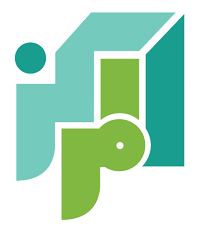Abdel Hamid Baalbaki (1940–2013) was a painter, poet, and writer committed to sharing his passion for art with as wide an audience as possible. In 1995, he opened an art space, Al-Riwaq Al-Tashkilyi, in Haret Hreik to make art accessible to working-class neighborhoods. He taught for 30 years at the Lebanese University and served as President of the Lebanese Association of Painters and Sculptors (LAAPS) from 1992 to 1994, becoming a prominent voice in the art community. He graduated with a degree in Fine Arts from the Lebanese University, Institute of Fine Arts in 1971, and later received a grant from the Ministry of Education to study mural art at ENSAD in Paris in 1972. His passion extended to his family, including his brother Fawzi, a painter, and his nephews Said and Ayman, both artists. Among his eight children, Soumaya became a singer, Oussama a painter, Lubnan a conductor, while Salman and Mounzer pursued careers in music and acting, respectively.
Karina El Helou
Beirut’s Sursock Museum is currently honoring Lebanese artist Abdel Hamid Baalbaki, in a tribute exhibition, through that serves as an ode to the country’s south and a remembrance of Baalbaki’s home in Odeisseh, which was envisioned as one of the village’s first cultural centers, before its damage during the 2024 conflict between Israel and Hezbollah.
Born in 1940 in Odeisseh to a family of farmers, Abdel Hamid Baalbaki discovered his passion for drawing at an early age. He pursued fine arts studies at the Lebanese University under the guidance of the renowned painter Rachid Wehbi. His parents instilled in him a love for the land, particularly the ochre earth of the South, which would later become a recurring theme in his work. After spending more than thirty years in Beirut, Baalbaki returned to Odeisseh to build his home and establish a library that would house over 8,000 rare books.
In fact, Baalbaki’s world extended beyond art, encompassing literature and poetry. As the author of three poetry collections, his passion for the written word was as profound as his devotion to painting. The Odeisseh library was to be one of his final endeavors, dedicated to the history of art and literature — a testament to his lifelong pursuit of knowledge. Tragically, this invaluable collection did not survive beyond his time, but the bulk of Baalbaki’s paintings are part of the family’s collection (his son Oussama Baalbaki is also an accomplished artist).







The exhibition celebrates his work and legacy, exploring the notion of home in its first section and offering an ode to the South in the second, while showcasing his famous 1977 mural “War.” As history tends to repeat itself, “War” was first exhibited in 1979 at the Glass Hall of the Ministry of Tourism in a group exhibition titled Warm Injury, dedicated to South Lebanon in the aftermath of its invasion.
Baalbaki’s house was not alone in meeting its recent fate; entire villages have been wiped out, including the home of the late renowned painter Hussein Madi in Chabaa. A comprehensive assessment of the damage to heritage buildings and artists’ estates has yet to be conducted.
The work of Abdel Hamid Baalbaki is included in several major Arab collections: Saradar, Dalloul and Barjeel. Until today, however, Baalbaki’s work hasn’t been shown in Europe or the United States.
Despite leaving behind a relatively small body of work — around 200 pieces — some of which were lost in recent destruction along with parts of his archives and drawings, Baalbaki remained committed to using his art to serve the underprivileged, portraying their lives in the streets of Chiyah and Beirut.
Baalbaki sought to define Arab modernity by exploring Islamic art, the work of Al-Wasiti, and Arabic poetry. His early works, such as Ashura and Al-Hajj, reflect this journey. He engaged in dialogues with his contemporaries such as Aref El Rayess on authenticity in Arab art, echoing broader concerns discussed at events like the 1971 ALECSO conference and the first Arab Congress for Plastic Arts. These efforts, led by organizations such as the General Union of Arab Plastic Artists, aimed to promote the Arabization of modern art, emphasizing authenticity, identity, and accessibility to the Arab public.
In his later years, Baalbaki experimented with various styles, including mural art inspired by Diego Rivera, but ultimately returned to figurative painting with a series dedicated to nature.
Baalbaki was not interested in commercial representation or selling his works. He exhibited at Gallery One in 1983, and after his passing, Saleh Barakat Gallery dedicated a retrospective to his work in 2018. During his lifetime, he primarily participated in group exhibitions, often choosing to keep his works rather than sell them. He favored public spaces for his art, holding solo exhibitions at the Glass Hall of the Ministry of Tourism in 1993 and the UNESCO Palace in 2008. Throughout his career, he took part in over sixty group exhibitions, both in Lebanon and elsewhere in the Arab world.











